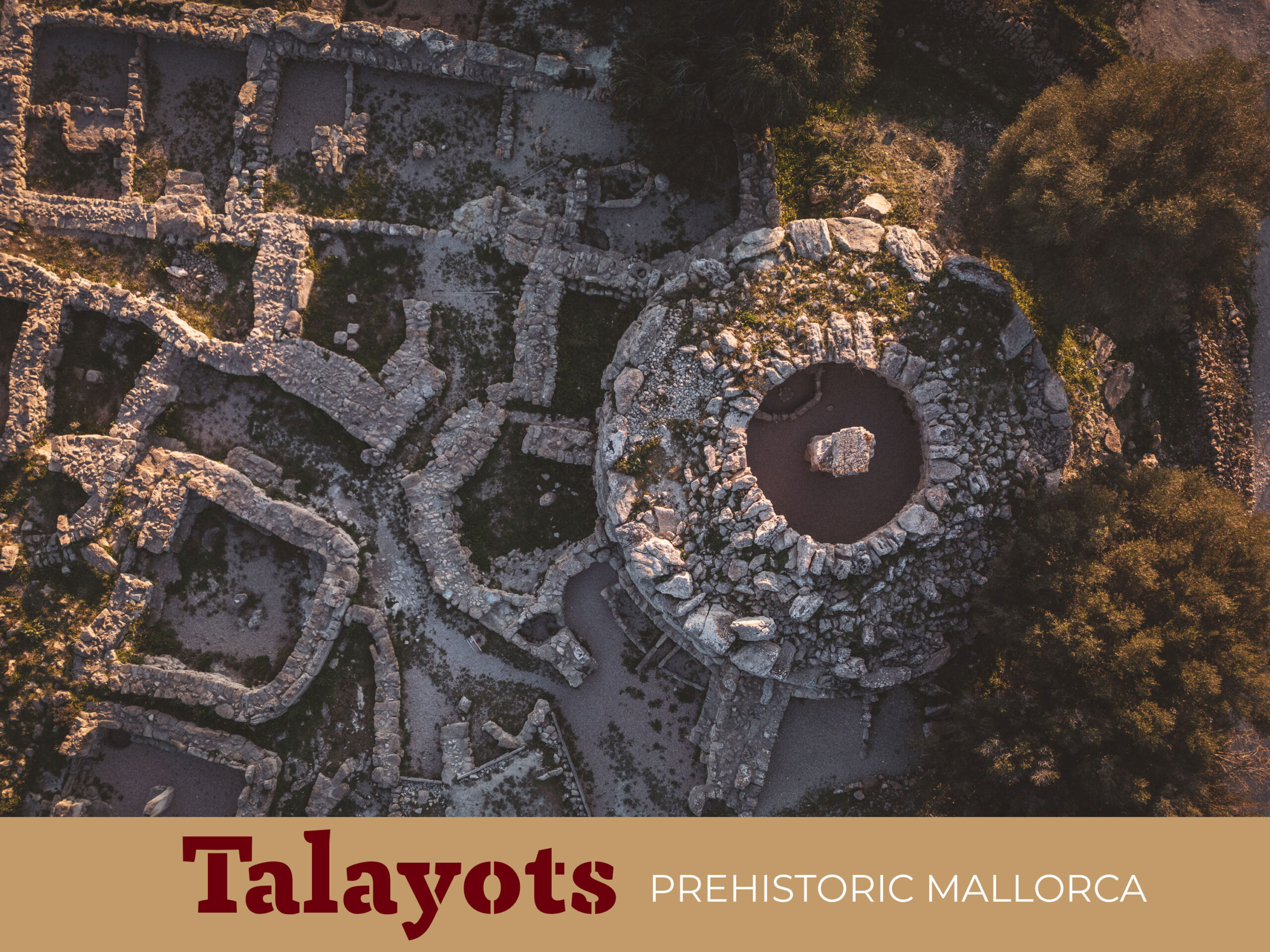
🇪🇸 Mallorca | 1300 - 123 BC
Content
The Talayot Culture on Mallorca
The Talayot Culture was a prehistoric civilization that flourished between the 13th and 2nd centuries BC on the Balearic Islands, particularly on Mallorca and Menorca. Named after its characteristic tower structures, the Talayots, this culture left behind impressive megalithic constructions that continue to puzzle researchers to this day.
Long before the emergence of the Talayot Culture, Mallorca was already inhabited. The earliest bone finds date back to the 7th millennium BC, but little is known about these early settlers. They likely lived in simple structures made of clay or in natural caves, leaving behind few tangible traces.
Around 1300 BC, a profound transformation took place: new settlements suddenly emerged, surrounded by massive walls and dominated by imposing stone towers—the Talayots. This marked the beginning of a new era, now referred to as the Talayot Culture. The name derives from the Moorish term Talaya, meaning watchtower or defensive tower, a term that archaeologists later adopted for the entire period. Between 1300 BC and 123 BC, this culture shaped the landscape of Mallorca until the Romans conquered the island, ushering in a new chapter in its history.
The History of the Talayots
The Talayot Culture developed from local prehistoric communities and reached its peak during the Late Bronze and Early Iron Age. However, it remains unclear whether this was a continuous development or if the island was resettled by new inhabitants.
Some experts suggest that new settlers arrived on Mallorca and displaced earlier cultures. Their origins remain a mystery—possibly from the eastern Mediterranean, as similar 'Cyclopean' construction techniques can be found on Malta, Sardinia, and Corsica. Despite clear connections to other Mediterranean cultures (e.g., Balearic slingers serving as mercenaries for the Carthaginians and Romans), the Talayot Culture is considered a unique development of the Balearic Islands.
The massive construction of the Talayots, combined with fortified walls and defensive towers, suggests that these new inhabitants were not a peaceful people. They may have destroyed earlier settlements and replaced them with their own fortified villages. Soon, the entire island was covered with these Talayot settlements—around 250 have been identified, with an average distance of 3 km between them.
Each community likely consisted of around 100 people, living primarily from agriculture and livestock farming, supplemented by a well-developed craft tradition, as evidenced by finds of ceramics, tools, and jewelry. These artifacts provide valuable insights into their daily life and craftsmanship. The communities lived in villages surrounding the Talayots and developed complex social structures, possibly led by a ruling family within a hierarchical system. But how were they organized across the island? Was there a form of kingship? Were the settlements in constant conflict with one another? The Talayots may have served as watchtowers, residential structures, or gathering places, but their exact function remains a mystery to this day.
Skizze by MUSEU ARQUEOLÒGIC DE SON FORNÉS
Traces of the Talayot Culture Today
For those eager to explore the traces of the Talayot Culture, Mallorca offers several well-preserved archaeological sites. Particularly noteworthy are Ses Païsses, Capocorb Vell, and Son Fornés, which provide fascinating insights into the lives of this early civilization. Additionally, museums such as the Son Fornés Museum in Montuïri and the Museum in Manacor offer deeper historical context. The latter also sheds light on other historical periods of Mallorca.
You are currently viewing a placeholder content from Google Maps. To access the actual content, click the button below. Please note that doing so will share data with third-party providers.
More Information- Son Fornes on Google Maps,
Coordinates: 39°35’02.7″N 2°58’01.7″E
You are currently viewing a placeholder content from Google Maps. To access the actual content, click the button below. Please note that doing so will share data with third-party providers.
More Information- Ses Païsses on Google Maps,
Coordinates: 39°41’14.6″N 3°21’18.7″E
Necropolis of Son Real
The Necropolis of Son Real is a prehistoric burial site located on the northern coast of Mallorca, near Can Picafort. Dating back to the Talayot period (c. 7th–4th century BC), it contains over 100 graves, arranged in small stone chambers. The dead were buried here in close connection to the sea, indicating the special significance of this site for the island’s ancient inhabitants.
You are currently viewing a placeholder content from Google Maps. To access the actual content, click the button below. Please note that doing so will share data with third-party providers.
More Information- Son Real on Google Maps,
Coordinates: 39°45’18.4″N 3°10’56.4″E
In addition to Google Maps, Wikipedia & Co., specifically:
- „Führer von Son Real“ / Govern Illes Balears (available at Visitor Center Son Real)
As an Amazon Associate, we earn from qualifying purchases. Some of the links are affiliate links, which we mark with an asterisk (*). If you click on these links and purchase a product, we receive a small commission at no extra cost to you – but it buys us a coffee. We only recommend products that we have personally purchased and tested.
